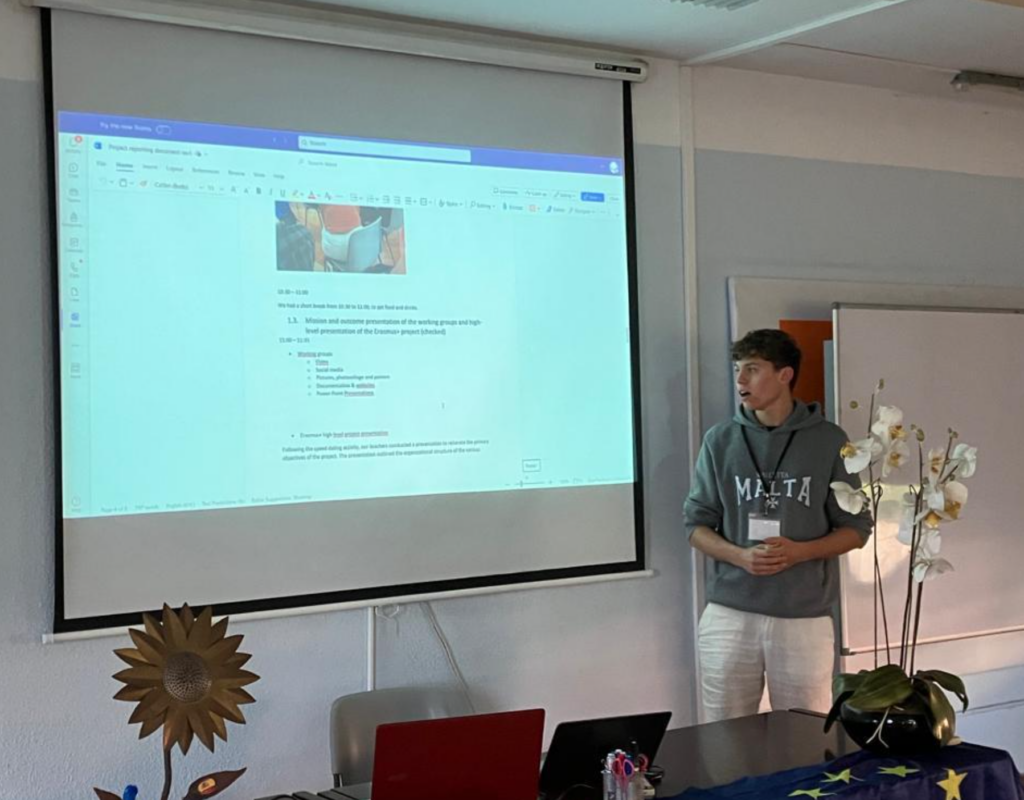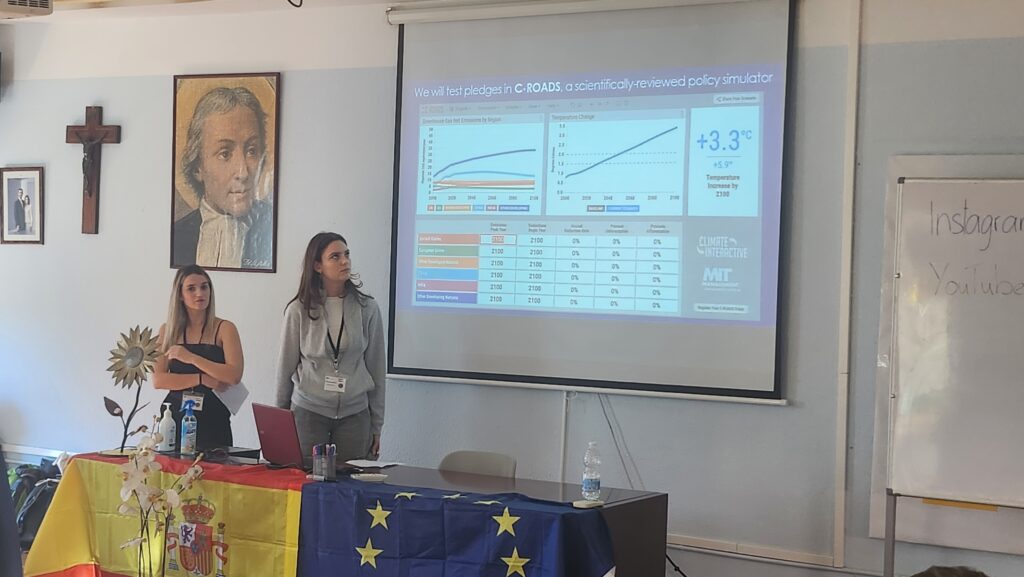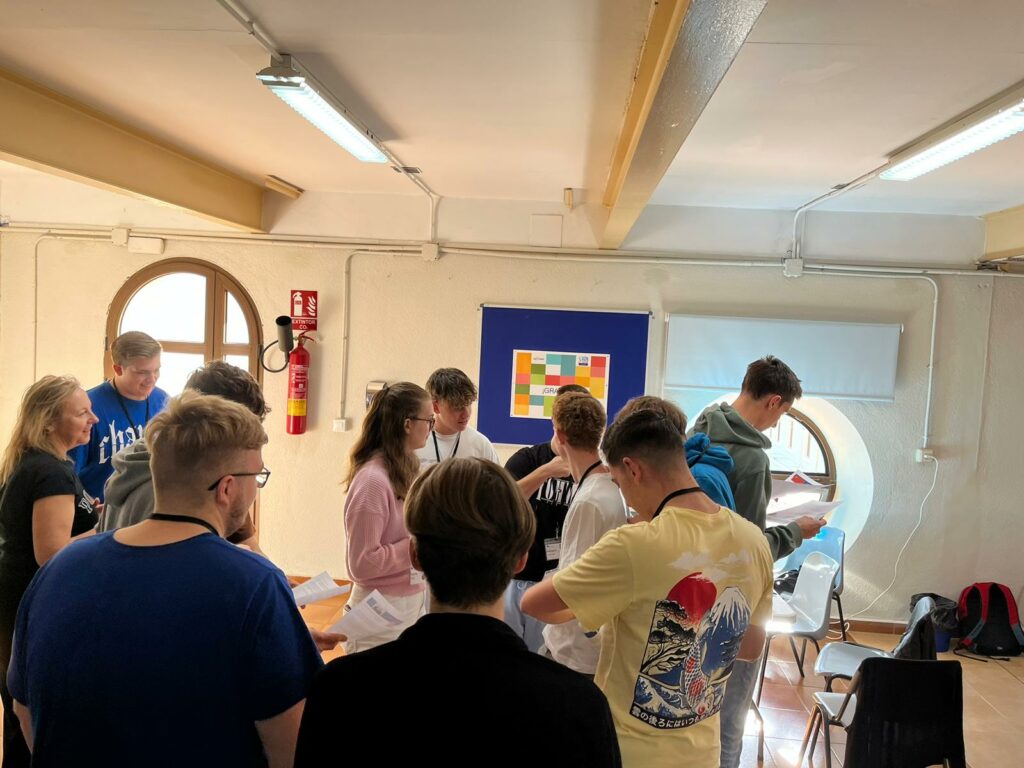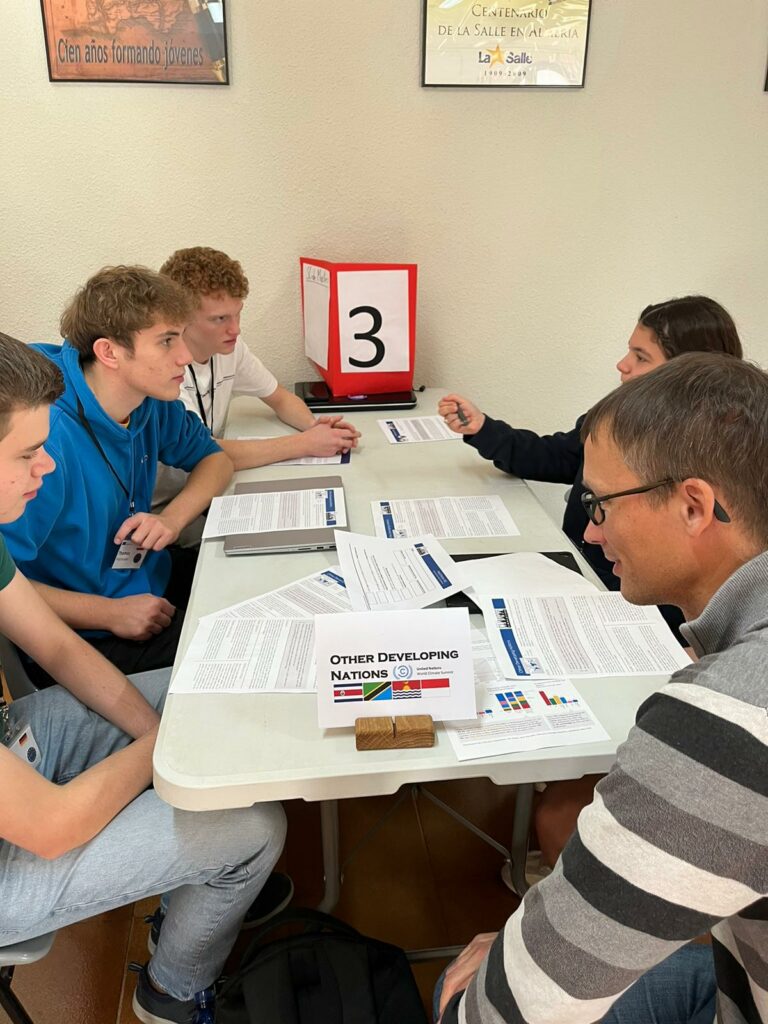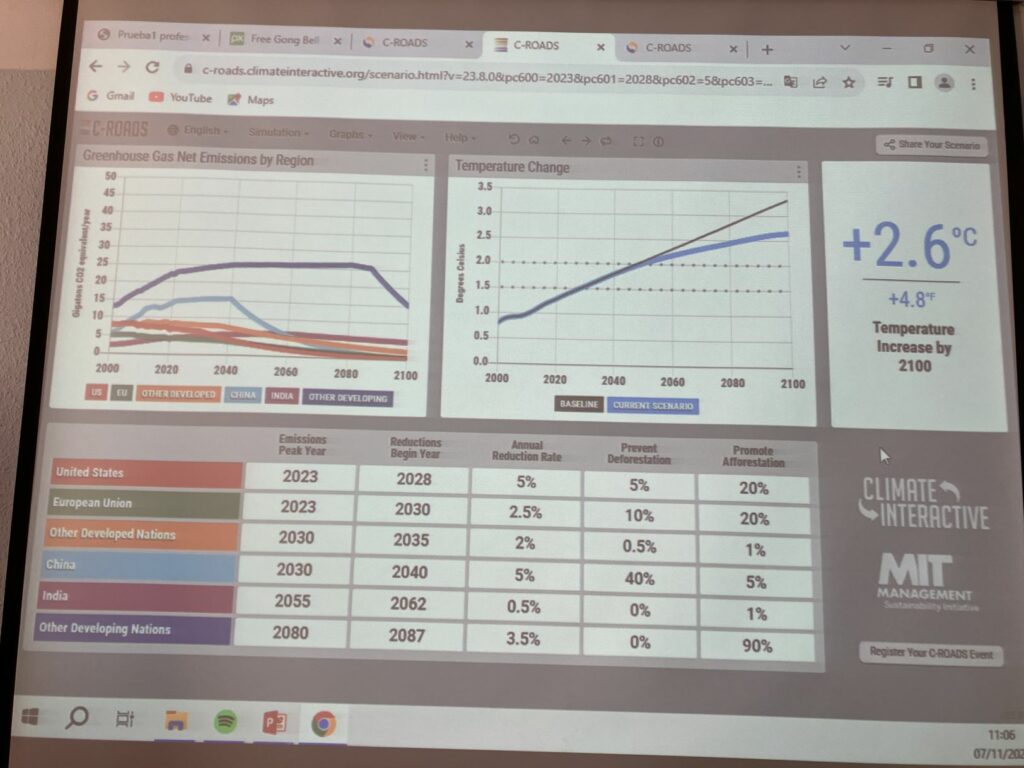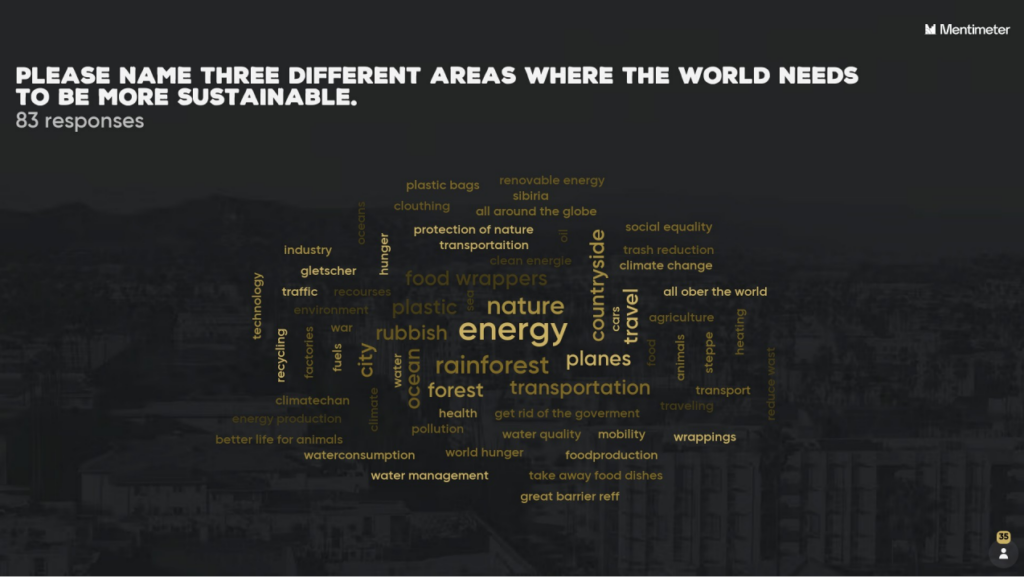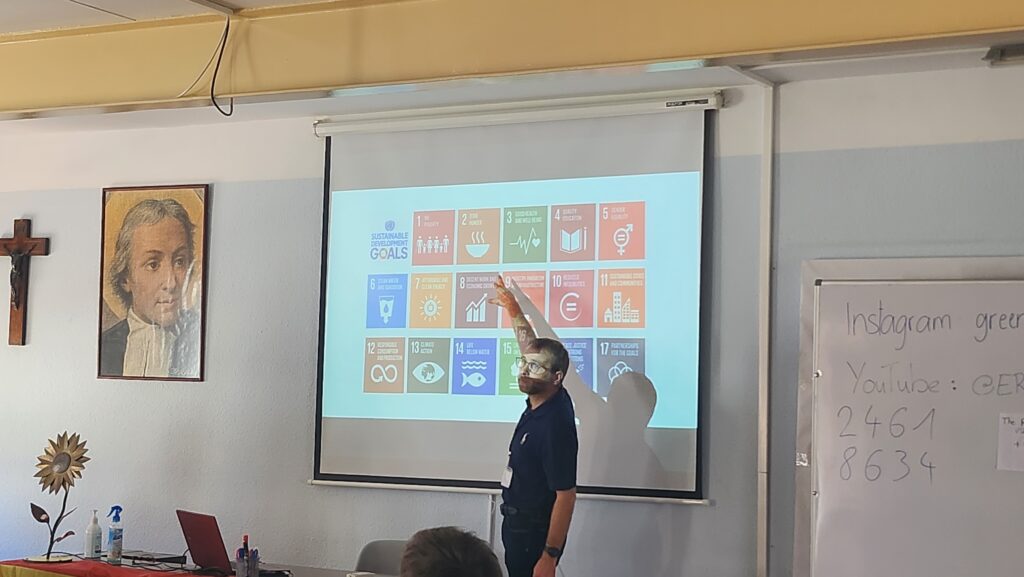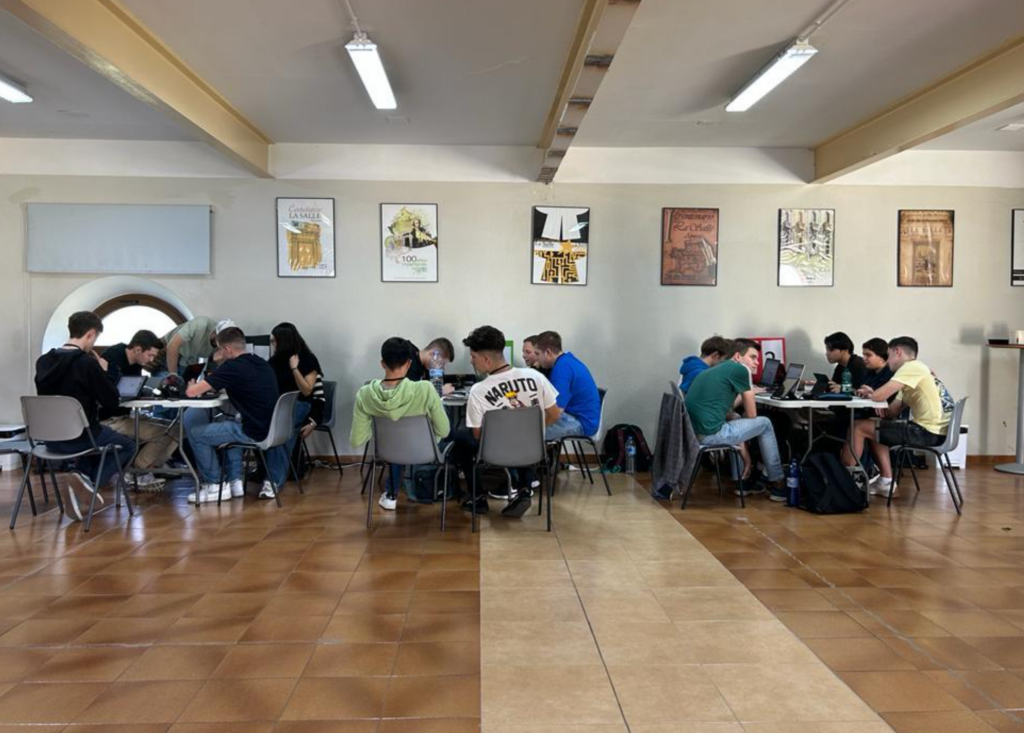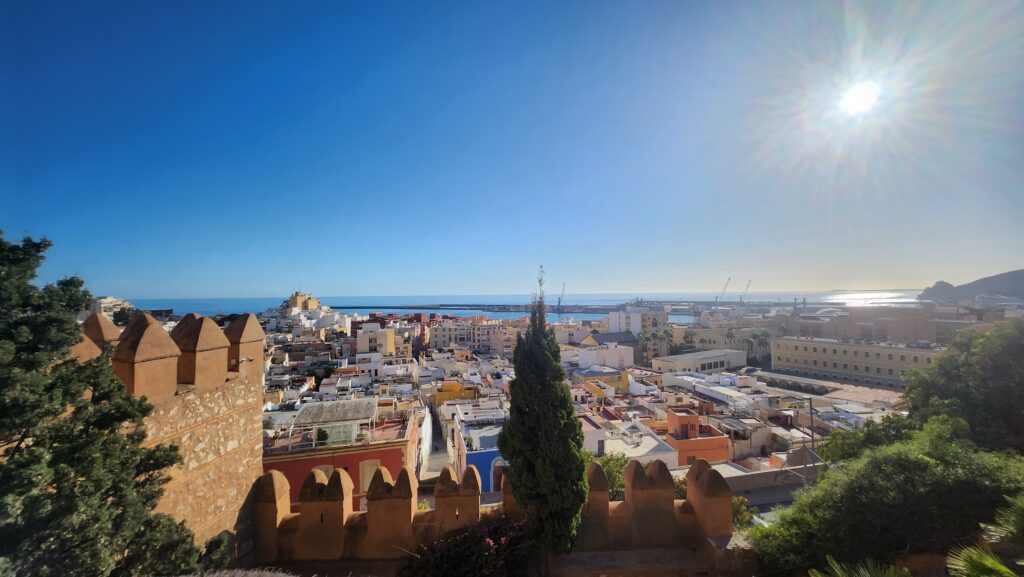Second day
Recap of the day before
In the morning, we kick-started our day with brief team presentations. Each team highlighted their current work and recapped the previous day’s achievements. For instance, the presentation team used a PowerPoint, the photography team showcased a creative collage, and the video team shared a succinct video.
This practice took around 20 minutes and received a positive response from all participants. As a result, we’ve decided to continue this daily ritual for the next week, as it not only sets a productive tone for the day but also enhances team unity and collaboration.
Climate Change Workshop
PowerPoint Introduction
Alexandra and Catia introduced us to the climate change workshop, which centers around a simulation of the Paris Agreement. This engaging exercise involves five regional negotiation parties representing the USA, European Union, China, India, and other developing nations. Each participant is assigned to one of these parties, with the task of delving into discussions on their respective contributions to combat climate change, what they require from other nations, and what they can offer in return.
Adding a dynamic twist to the simulation, there is also a climate activist and a fossil fuel lobbyist, each trying to sway the groups toward increased or decreased fossil fuel usage.
Discussion time
When the students from LTETT concluded their presentation on the current state of climate emissions and actions, they were assigned to represent various global governmental players, each of which would significantly impact the outcome of the Paris climate targets. One group assumed the role of China, another represented the United States, while others portrayed the Global South and Indian representatives. Additionally, one group took on the responsibility of representing the leaders of the European Union.
Within these groups, we delved deeper into the analysis of data specific to the region we were simulating. This data enabled us to formulate preliminary concepts and action plans aimed at reducing emissions and promoting afforestation in our respective regions. We also explored opportunities for collaboration with other nations to support their ecological objectives.
After approximately 15 minutes of discussion and planning, we engaged in diplomatic efforts to persuade other nations to cooperate with us and share our proposed plans. As discussions progressed, we regrouped to refine and solidify our action plans, establishing concrete goals such as percentage reductions in CO2 emissions, measures to prevent deforestation, strategies for afforestation, and the financial contributions our country would allocate to the climate fund.
These numerical targets were then entered into the C-Roads simulator, developed by MIT, to assess their potential impact on climate outcomes.
Results
In the workshop, groups estimated their impact on climate change. While waiting for the official results, we recorded our guesses on paper and displayed them on a whiteboard. The final result showed a 2.6°C increase in temperature, with Group 3’s estimate of 2.8°C being the closest to the actual result. All groups successfully achieved their climate goals.
17 SDG Goals Workshop
Survey
After the break, a teacher delivered a presentation on the 17 Global Goals established by the United Nations. Before delving into the explanation of these goals, we were provided with a code to access Mentimeter, a website where we listed the areas we believed should be made more sustainable in the world. Upon completion, we noticed a striking resemblance between our suggestions and the actual Global Goals. Subsequently, we received a detailed explanation of each of these goals.
Presentation
The morning session ended with a concise presentation that elucidated the purpose, significance, and the alignment of the UN Global Sustainable Goals with the current workshop. We received an informative overview of the two primary goals currently in focus, namely, “Good health and well-being” and “Climate action.” It was intriguing to gain a deeper understanding of the underlying intentions behind these subjects.
Collaboration time
After having lunch and a short break we decided to commence to report everything we’ve done in the day. We divided the times of the day into six so each group member could write about something and create together a whole daily diary of the activities and advancements done every day. For that purpose, we used different kinds of tools like canvas or ChatGPT.
Guided tour
City tour
To conclude the second day, we embarked on a guided tour of Almería, where our knowledgeable guide provided detailed explanations about each monument we encountered. Our explorations led us to the historic heart of the city.
The most remarkable site on our itinerary was the Alcazaba, a historic Muslim fortress with a history spanning over 500 years. This monumental structure featured both Muslim and Christian elements. The guide enlightened us about the fortress’s significant role in ancient times, offering insights into its construction, history, and the rich cultural heritage it represents as a prominent landmark of Almería.
